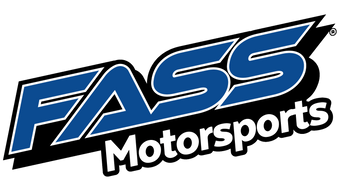The 6.4L Powerstroke, found in 2008–2010 Ford Super Duty trucks, was Ford’s bridge between the troubled 6.0L era and the more reliable 6.7L. On paper, the 6.4 had plenty going for it: twin turbos, quiet operation, and solid power for its time.
But over the years, it’s become well-known for several catastrophic issues that owners should be aware of — especially if you’re shopping for one used or trying to keep yours alive for the long haul.
Below, we break down the most common 6.4 Powerstroke problems, why they happen, and how many owners address or prevent them.

1. Fuel System Contamination
One of the potential issues with the 6.4 Powerstroke is its high-pressure common rail fuel system. Contaminated diesel fuel — whether from water, dirt, or aeration — can lead to catastrophic injector and pump failures.
When the fuel system fails, it can send debris throughout the entire system, often requiring full replacement of the high-pressure pump, injectors, rails, and lines.
Why it happens: The factory filtration setup isn’t as robust as it should be for the 6.4’s injection pressures.
How owners prevent it: Many install aftermarket lift pump and filtration systems (like FASS Fuel Systems) to provide better filtration, consistent fuel pressure, and air/vapor separation.

2. EGR & DPF System Issues
The 6.4 was Ford’s first diesel to use a Diesel Particulate Filter (DPF), and combined with its dual EGR coolers, the system is notorious for:
- Frequent DPF regens (especially on short trips)
- EGR cooler failures leading to coolant loss
- Soot buildup that affects performance and reliability
Excessive heat and backpressure during regens can also accelerate wear on turbos and engine components.
Owner takeaway: Regular maintenance, high-quality fuel, and ensuring proper operating temperatures are key. Many owners switch to upgraded coolers and improved filtration to extend life.
3. Turbocharger Failures
The 6.4’s sequential twin-turbo setup offers good performance but adds complexity. Common issues include:
- Sticking vanes in the variable-geometry turbo (VGT)
- Bearing wear and oil leaks due to high heat cycles
- Accelerated wear from frequent regen cycles
Turbo service or replacement is often required over the life of the truck, and costs can be high due to the tight packaging of the twin setup.

4. Radiator & Cooling System Failures
6.4 Powerstrokes are known for radiator and degas bottle leaks, often due to poor mounting design that allows the radiator to flex with the frame. Over time, this causes cracks and leaks.
How owners fix it: Many install upgraded radiators, reinforced mounting brackets, and keep a close eye on coolant levels to catch issues early.
5. Engine Wear & “Washing Down” Cylinders
One unique 6.4 problem involves fuel dilution of the engine oil during regen cycles. Because of how the DPF regen system works, fuel is injected during the exhaust stroke — and some of that fuel can seep past the rings into the crankcase.
Over time, this can reduce oil lubrication and accelerate wear on bearings and cylinder walls.
Owner takeaway: Frequent oil changes with high-quality diesel-rated oil are critical for 6.4 longevity.
6. Head Gasket & Stud Issues (Especially on Tuned Trucks)
While the 6.4 block and rotating assembly are strong, the factory head bolts can stretch under high boost — especially on tuned trucks. Blown head gaskets are common in higher-horsepower builds or poorly maintained engines.
Common solutions: Many owners install head studs when doing top-end work, along with upgraded gaskets and proper tuning.

Other Notable Issues
- Up-pipe leaks: The bellows on the up-pipes can crack over time.
- Sensor failures: Various emissions and EGT sensors are prone to failure, often triggering check-engine lights.
- Complex repairs: Many major components (like turbos) require cab removal for access, driving up labor costs.
How to Protect Your 6.4 Powerstroke
- Improve fuel filtration: A FASS Fuel System can drastically improve fuel quality and pump/injector life.
- Stay ahead on maintenance: Oil changes, coolant monitoring, and EGR/DPF cleaning can prevent bigger issues.
- Monitor temps and pressures: Installing gauges or digital monitors helps catch problems early.
- Work with experienced diesel techs: The 6.4 is complex; expert service makes a difference.

The Bottom Line on the 6.4 Powerstroke
The 6.4 Powerstroke can be a strong performer when properly maintained and upgraded, but it’s not a “set it and forget it” diesel. Knowing the common 6.4 Powerstroke problems helps owners make smarter decisions—whether buying, maintaining, or upgrading.
How FASS Motorsports Can Help
At FASS Motorsports in Washington, Missouri, we help diesel owners protect and upgrade their trucks.
From fuel filtration systems to suspension, lighting, and installation, our team serves Franklin County and the greater St. Louis area with trusted products and real diesel expertise.
👉 Shop 6.4 Powerstroke upgrades online
👉 Visit our showroom in Washington, MO for installation & service
Questions? We’re Here to Help.
- Phone: (636) 497-2015
- Email: info@fassmotorsports.com

